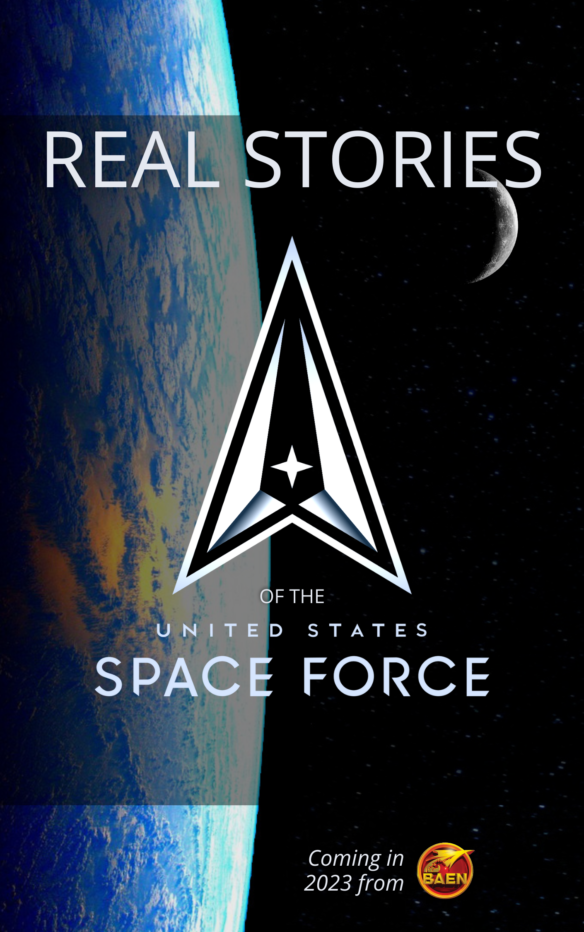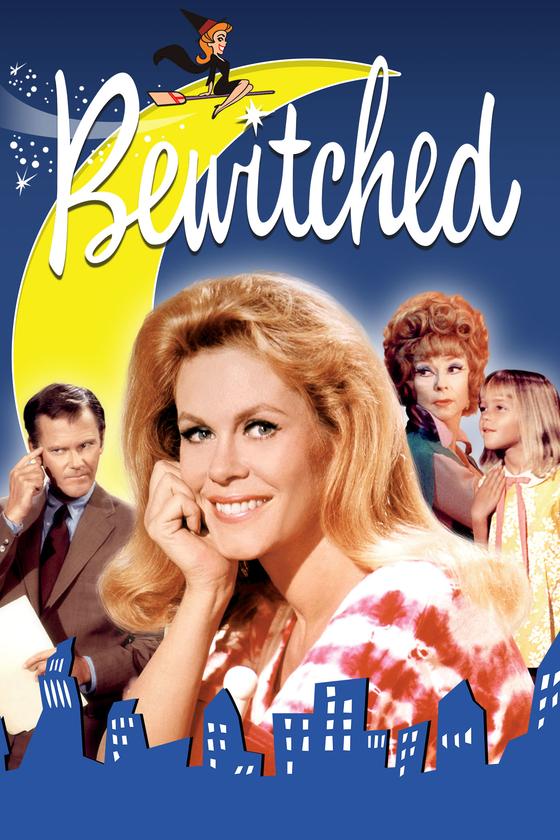(1) JAYMEE GOH ANTHOLOGY HAS EKPEKI STORY. Don’t Touch That, an anthology about parenting edited by Jaymee Goh, was released this week. It includes Oghenechovwe Donald Ekpeki’s latest short story “Mother’s Love, Father’s Place”. He says, “It’s a historical fantasy story set in southern Nigeria and touches on the killing of Twins in Calabar & how it ended. (spoiler, not by Mary Slessor).”

(2) NO TURNING BACK! The New Yorker remembers “The Enduring Allure of Choose Your Own Adventure Books”.
You were a girl who wanted to choose your own adventures. Which is to say, you were a girl who never had adventures. You always followed the rules. But, when you ate an entire sleeve of graham crackers and sank into the couch with a Choose Your Own Adventure book, you got to imagine that you were getting into trouble in outer space, or in the future, or under the sea. You got to make choices every few pages: Do you ask the ghost about her intentions, or run away? Do you rebel against the alien overlords, or blindly obey them?
This was the late eighties in Los Angeles. You binged on these books, pulling tattered sun-bleached copies from your bookshelf: four, five, six in the course of a single afternoon. All over the country, all over the world, other kids were pulling these books from their bookshelves, too. The series has sold more than two hundred and seventy million copies since its launch, in 1979. It’s the fourth-best-selling children’s-book series of all time. Its popularity peaked in the eighties, but the franchise still sells about a million books a year….
The story of Choose Your Own Adventure is largely the tale of two men: Edward Packard, a lawyer who came up with the concept while telling bedtime stories to his two daughters (who sometimes wanted the protagonist to do different things), and R. A. (Ray) Montgomery, an independent publisher who put out Packard’s first book, in 1976, after all the big houses had rejected it….
Both men went through divorces shortly before the series started gaining momentum, and ended up writing many of their books as single fathers. Their children remember helping their fathers invent and flesh out new scenarios: Packard’s daughter Andrea suggested the idea of a time-travelling cave; Montgomery’s sons, Anson and Ramsey, suggested cars (the Saab 900 Turbo, the Lancia Stratos) for “The Race Forever.” Packard paid his children thirty-five cents an hour to read his manuscripts and offer feedback: Which parts were boring? Which choices would kids enjoy? (Andrea, Anson, and Ramsey ended up writing for the franchise, publishing their first Choose books during college.)…
(3) INTERIOR LIFE OF THE ARTIST. Melissa Capriglione is “just journaling some thoughts” – that we probably can all relate to in our own way.
(4) RECIDIVIST. Bob Roehm posted a clever photo on Facebook taken after he was apprehended with a banned book – Fahrenheit 451 – at Carmichael’s Bookstore in Louisville, KY.
(5) THE DNA OF THE DEATH STAR. [Item by Martin Morse Wooster.] The San Francisco Chronicle looks at how John Dysktra built the Death Star in Star Wars based on his work in 1972 building a realistic model of Berkeley. “This obscure Bay Area study shaped the ending of ‘Star Wars’”.
The newly released six-part Disney Plus streaming docuseries “Light & Magic” goes deep into the history of George Lucas’ San Francisco-based special effects studio Industrial Light & Magic, which was founded in 1975. The ending of the second episode explores the process behind the Death Star scene, in which the fate of the Rebel Alliance hangs on Luke Skywalker’s ability to speed his X-wing through a narrow trench and blast a thermal exhaust port that is only 2 meters wide.
In reality, the entire surface of the Death Star was a hand-built model that measured approximately 15 by 40 feet. Meticulous craftsmanship contributed to the verisimilitude, but the documentary reveals that the filmmaking techniques that made the scene feel so real are actually rooted outside the realm of special effects. It turns out that the entire sequence hinged on a model developed during an urban planning study at UC Berkeley in the early 1970s, which also happened to shape the future of San Francisco’s skyline.
“The Berkeley Experiment,” as it is referred to in the documentary, was funded by the National Science Foundation and led by urban planning professor Donald Appleyard at the school’s Environmental Simulation Lab. Completed in 1972, the project entailed building a small-scale model of Marin County and a computer-controlled stop-motion 16 mm camera system. The goal was to achieve a sense of realism as a model car traversed the miniature cityscape, in hopes that the technique could guide civic decision-making regarding construction choices. …

(6) ATTACK OF THE 50-YEAR-OLD CONVENTION. Rob Hansen draws on contemporary reports by Fred Pohl, Rob Holdstock, Sam Long, Bob Shaw and many others to reconstruct the events of “Chessmancon (1972)”. Many photos, too, including GoH Larry Niven giving a physics lecture?
CHESSMANCON, the twenty-third post-war UK National Science Fiction Convention, took place over the weekend of Friday, 31st March to Monday, 3rd April 1972. Named for both its location (Chester) and the city (Manchester) from whose Delta Group most of those organising it were drawn, CHESSMANCON was the fourth MANCON, the others being MANCON, SUPERMANCON, and THIRDMANCON.
…Presumably because of its name, the organisers of CHESSMANCON decided to include a chess tournament. Sadly, I don’t think SUPERMANCON made any reference to Clark Kent, or THIRDMANCON any reference to Harry Lime. So far as I’m aware, CHESSMANCON is the only con to be named after *two* cities.
And here’s another excerpt —
BOB SHAW:
I suppose that in what purports to be a con report one should make some mention of the official programme. Regrettably, I have a tendency to go to conventions and not see any of the programme items, but this doesn’t mean that the programme isn’t important to me. I like to be near the programme and let it induce currents in me, a coil of nerves in the vicinity of the con hall’s electromagnetic field. Some other fans feel the same way (I won’t name any names) and it is pleasant to sit with them in the bar, speculating on what is actually happening in the hall and listening to fragmentary reports from runners – “George Hay has got up to ask a question”, “The projector has broken down”, “There’s been an outbreak of sporran rash among the Scottish fans”, “George Hay is still asking his question”….
(7) RAMMING SPEED. Science is watching as “NASA’s asteroid deflection mission takes aim”.
On 26 September, an act of targeted violence will unfold 11 million kilometers from Earth, as a spacecraft about the size of a vending machine smashes into a small asteroid at 6 kilometers per second. Unlike some asteroids that stray worrisomely close to Earth’s orbit, Dimorphos—the 160-meter moon of a larger body—is an innocent bystander, posing no threat to our world. But the looming assault represents humanity’s first-ever field test of a planetary defense mission: NASA’s Double Asteroid Redirection Test, or DART. The hope is that the collision will nudge Dimorphos toward its 780-meter partner, Didymos, shortening a nearly 12-hour orbital period by minutes. A successful strike would support the idea that, in the future, similar efforts could deflect threatening asteroids onto safer courses. But simulations and lab experiments show the fate of the mission depends on a crucial question: Are such small asteroids solid boulders or—as astronomers increasingly believe—loose heaps of rubble?…
(8) MEDIA BIRTHDAY.
1964 – [By Cat Eldridge.] Bewitched premiered on ABC fifty-eight years ago this evening.
Creator Sol Saks’ said his basis for this series were I Married a Witch, the 1942 film that came from Thorne Smith’s unfinished novel The Passionate Witch, and the John Van Druten Broadway play Bell, Book and Candle, which was adapted into the 1958 film. Yes, both films were properties of Columbia Pictures, which also owned Screen Gems, which also produced Bewitched.
The show was popular, finishing as the second-rated show in America during its debut season, staying in the top ten for its first three seasons, and ranking in eleventh place for both seasons four and five.
It starred, as you well know, Elizabeth Montgomery as Samantha Stephens, Dick York for the first, and Dick Sargent for the rest of the series, as Darrin Stephens. Agnes Moorehead as Endora was really the only other ongoing character.
Look I need no SPOILER ALERTS here as y’all know the characters, the setting and the story. I bet everyone here has seen some or all of it.
Historical note here.
Series director William Asher started rehearsals for the pilot on November 22, 1963 which of course coincided with President Kennedy’s assassination. He felt deeply affected by the event as he personally knew Kennedy — he had produced the 1962 televised birthday party where Marilyn Monroe sang “Happy Birthday, Mr. President”.
End historical note. Back to the series.
The Stephens house, inside and out, was inspired by a location used in two Gidget movies. Gidget was filmed in 1959 at a real house at 267 18th Street in Santa Monica. The blueprints of this house were later reversed and replicated as a house facade attached to an existing garage on the backlot of Columbia’s Ranch. This was the house seen on Bewitched.
Then, the patio and living room sets seen in Columbia’s Gidget Goes to Rome (1963) were adapted as the permanent Bewitched set for 1964. (At least some episodes of I Dream of Jeannie also were filmed using this interior set which makes sense as it’s the same production company. Using material from one series or film on another is very, very economical.)
Bewitched lasted eight seasons and two hundred fifty episodes. Both the opening and closing animated credits were produced by Hanna-Barbera. Naturally they are on YouTube.
No, I’m not mentioning or discussing the reboot. I’m really not.
As near as I can tell, Bewitched is only streaming for free, errr, on Freevee.

(9) TODAY’S BIRTHDAYS.
[Compiled by Cat Eldridge.]
- Born September 17, 1885 — George Cleveland. He was Professor Hensley aboard the Thirties Flash Gordon film serial. IMDb says that he was supposed be in 1938’s Flash Gordon’s Trip To Mars, but his bits ended up not being in the film. (Died 1957.)
- Born September 17, 1908 — John Creasey. English crime and SF writer who wrote well over than six hundred novels using twenty-eight different names. His SF writings were mostly in the Dr. Palfrey series, a British secret service agent named Dr. Stanislaus Alexander Palfrey, who forms Z5. There’s a lot of his novels available from the usual suspects. And I do many really a lot, so I’m going to ask all of you where to start reading his SF novels as I am curious as to how they are. (Died 1973.)
- Born September 17, 1917 — Art Widner. He was a founding member of The Stranger Club which created Boston fandom. He chaired Boskone I and Boskone II which were held in 1941 and 1942, they being the very first two Boston cons. Fancyclopedia 3 has a very detailed look at him here. (Died 2015.)
- Born September 17, 1920 — Dinah Sheridan. She was Chancellor Flavia in “The Five Doctors”, a Doctor Who story that brought together the First, Second, Third, Fourth and Fifth Doctors. Richard Hurndall portrayed the First Doctor, as the character’s original actor, William Hartnell, had died. (Died 2012.)
- Born September 17, 1920 — Roddy McDowall. He is best known for portraying Cornelius and Caesar in the original Planet of the Apes film franchise, as well as Galen in the television series. He’s Sam Conrad in The Twilight Zone episode “People Are Alike All Over” and he voices Jervis Tetch / The Mad Hatter in Batman: The Animated Series. And where’s a treat for you. Here he is on The Carol Burnett Show wearing his Planet of the Apes makeup. (Died 1998.)
- Born September 17, 1939 — Sandra Gimpel, 83. Performer and stunt woman. Though you’ll literally not recognize her, she was the salt monster aka the M-113 creature (as it was called in the credits) in “The Man Trap” episode of the original Trek. In “The Cage” episode, she played a Talosian. As a stunt woman, she’s been on genre shows ranging from Lost in Space to Lucifer and even appeared on films like Escape from New York.
- Born September 17, 1950 — Roger Stern, 72. Comics writer who’s most noted work who was on Avengers, Captain America, Doctor Strange, and Starman. I’m very, very impressed of his work on the first twenty-eight issues of Starman, which were published from 1988 to 1990.
- Born September 17, 1979 — Neill Blomkamp, 43. South African born Canadian filmmaker of District 9 which was nominated for Best Dramatic Presentation, Long Form at Aussiecon 4. EofSF says also, “Of particular note were Tetra Vaal (2004), a RoboCop-inspired advertisement for a fictional range of third-world law-enforcement drones; Alive in Joburg (2005), about an influx of Alien immigrants from a Spaceship stalled over Johannesburg; and Tempbot (2006), about a Robot office worker attempting to parse cubicle culture.” Other genre films include Elysium and Chappie.
(10) COMICS SECTION.
- Close to Home’s joke probably really isn’t about the first thing that came to my mind.
- Lio today is a real sinus friction story.
(11) NEW SUPERHERO CASTING CONTROVERSY. “With an Israeli Superhero, Marvel Wades Into an Intractable Conflict” reports the New York Times.
It was the latest addition to a fantasy world populated by an ever-growing cast of superheroes and villains: Marvel Studios announced this past week that it had cast the Israeli actress Shira Haas to play Sabra, a mutant Israeli police officer-turned-Mossad agent, in the next installment of the “Captain America” franchise.
While Jewish Israelis rejoiced at the casting of an actress from Israel as a superhero in a major Hollywood production (“Israeli Pride,” declared the Hebrew news site Maariv), the backlash among Palestinians and their supporters was swift, and #CaptainApartheid soon appeared on social media.
Many critics expressed outrage about Sabra’s character and her identity as an Israeli intelligence agent, accusing Marvel of buying into Zionist propaganda; of ignoring, or supporting, Israel’s occupation of territory captured in 1967; and of dehumanizing Palestinians….
(12) HE CAN DO IT! Paul Weimer takes up the challenge of reviewing the latest entry in a long-running series: “Microreview [book]: The Untold Story by Genevieve Cogman” at Nerds of a Feather.
How does one really review the 8th(!) book in a series and make that review intelligible to readers who have never read any of the books, and yet helpful to readers both old and new alike. This is the situation where I find myself talking about Genevieve Cogman’s The Untold Story, eighth in her Invisible Library novels.
I’ll start by saying that the Invisible Library novels, which the first was published in 2016, were multiverse before the multiverse was the new hotness. Imagine a multiverse of worlds , aligned on an order-chaos spectrum a la Moorcock. Imagine these worlds taking cues from Earth cultures and societies. Imagine two sets of superhuman beings–Dragons, representing order, and Fae, representing chaos, struggling for control and domination of these worlds. Now imagine a third power, a third party, the Library, seeking to stabilize the worlds, and collect books from all of them at the same time.
Irene Winters is one of these interdimensional Librarians. Her previous adventures have had her tangle with a traitor to the library (Alberich, more on him anon) deal with both Fae and Dragon politics (her first assistant is a Dragon, and her newest apprentice is a Fae) and visit a variety of worlds in places inspired by Venice, Vienna, New York, and more….
(13) SHE DREAMS OF GENIE. Nerds of a Feather film reviewer Arturo Serrano says it is no easy task to convey the feelings roused by this movie: “Love is a freely chosen yoke in ‘Three Thousand Years of Longing’”. But he does!
When one encounters an impeccably beautiful work of art, the attempt to explain it feels like a desecration. Three Thousand Years of Longing is that kind of art that you’re meant to experience more than understand. It does follow a plot, and the plot does make arguments, but to dissect those arguments risks losing sight of the experience. I can’t properly communicate to you the emotional content of this story. What I can try to do is describe what happens in it, but I will fall short of conveying all it says. This is one of those films that leave you permanently changed, and the only way for that secret alchemy to happen is to go yourself to the theater and let it wash over you….
(14) FIFTY YEARS LATER. Totally not sff, but a fascinating interview with insights about screenwriting: “Alan Alda on ‘M*A*S*H’: ‘Everybody Had Something Taken From Them’” in the New York Times.
Were there story lines that you thought “M*A*S*H” hadn’t quite tackled yet that you wanted to bring into the world of the show as a writer and director?
When I wrote, I tried to find out a little bit more about each of the characters. Who is Klinger [Jamie Farr] really? What was underneath — I almost said, what was underneath the dresses. [Laughs.] What was underneath the wearing of the dresses? Who was Margaret [Loretta Swit]?
I see on the internet that people assumed that because I was politically active, trying to get the Equal Rights Amendment passed, that in my writing I was trying to make political points, too. And I wasn’t. I really don’t like writing that passes as entertainment when it’s really propaganda. I want to hear a human story.
(15) EARLY CLUES. Jess Nevins writes about the history of Chinese detective fiction at CrimeReads: “Pre-Revolution Chinese Detective Fiction”.
Mysteries and detective fiction are usually thought of as the inventions of Edgar Allan Poe, but the truth is that they have both been popular in China for over a thousand years. The Chinese have no clear place or person of origin for mysteries and detective fiction, the way the West has Poe, but what the Chinese do have are centuries’ more mysteries and detective stories than the West does.
The first Chinese proto-mysteries—that is, mysteries who some but not all of the elements of modern mystery fiction—were the “gong’an” (“court case”) stories. Told in the form of oral performances and puppetry shows, the gong’an began appearing during the Northern Song Dynasty (960-1127). Gong’an traditionally featured incorruptible government officials solving criminal cases and bringing about justice to the guilty and restoration to those who were wronged….
(16) CAME TO THE WORLD IN THE USUAL WAY. CNN invites everyone to “Meet the mystery diamond from outer space”.
Scientists have debated its existence. Tiny traces provided clues. Now, researchers have confirmed the existence of a celestial diamond after finding it on Earth’s surface.
The stone, called lonsdaleite, has a hardness and strength that exceeds that of a regular diamond. The rare mineral arrived here by way of a meteorite, new research has suggested….
The revelation started to unfold when geologist Andy Tomkins, a professor at Monash University in Australia, was out in the field categorizing meteorites. He came across a strange “bended” kind of diamond in a space rock in Northwest Africa, said study coauthor Alan Salek, a doctoral student and researcher at RMIT University in Australia.
Tomkins theorized the meteorite that held the lonsdaleite came from the mantle of a dwarf planet that existed about 4.5 billion years, Salek said.
“The dwarf planet was then catastrophically struck by an asteroid, releasing pressure and leading to the formation of these really strange diamonds,” he added.
(17) VIDEO OF THE DAY. [Item by Martin Morse Wooster.] Alasdair Beckett-King explains why you should be nice to the annoying little guy with a squeaky voice who offers to show you a fantasy world!
[Thanks to Mike Kennedy, Martin Morse Wooster, JJ, John King Tarpinian, SF Concantenation’s Jonathan Cowie, Andrew Porter, Chris Barkley, Michael Toman, and Cat Eldridge for some of these stories. Title credit belongs to File 770 contributing editor of the day Jim Janney.]





